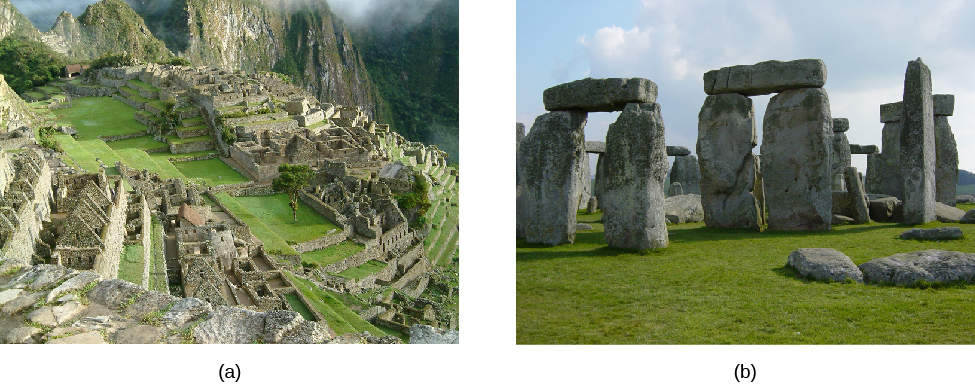4.2 History of Telescopes
The history of the development of astronomical telescopes is about how new technologies have been applied to improve the efficiency of these three basic components: the telescopes, the wavelength-sorting device, and the detectors. Let’s first look at the development of the telescope.
Many ancient cultures built special sites for observing the sky as shown in Figure 4.2. At these ancient observatories, they could measure the positions of celestial objects, mostly to keep track of time and date. Many of these ancient observatories had religious and ritual functions as well. The eye was the only device available to gather light, all of the colours in the light were observed at once, and the only permanent record of the observations was made by human beings writing down or sketching what they saw.
Two Pre-Telescopic Observatories

(a): Peru Machu Picchu Sunrise 2 by Allard Schmidt, CC0 1.0.
(b): Stonehenge Closeup by Daveahern, CC0 1.0.
While Hans Lippershey, Zaccharias Janssen, and Jacob Metius are all credited with the invention of the telescope around 1608—applying for patents within weeks of each other—it was Galileo who, in 1610, used this simple tube with lenses (which he called a spyglass) to observe the sky and gather more light than his eyes alone could. Even his small telescope—used over many nights—revolutionized ideas about the nature of the planets and the position of Earth.
Attribution
“6.1 Telescopes” from Douglas College Astronomy 1105 by Douglas College Department of Physics and Astronomy, is licensed under a Creative Commons Attribution 4.0 International License, except where otherwise noted. Adapted from Astronomy 2e.

